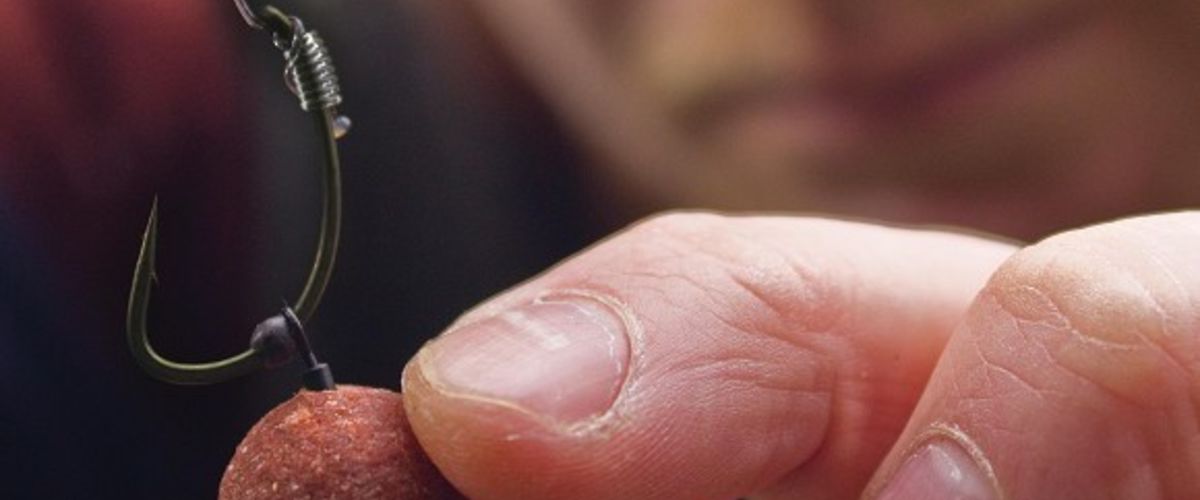
Stiff opposition
Avid Carper Mat Woods takes a look at traditional Stiff Rigs and why they offer mechanical benefits softer rigs cannot compete with…
Stiffness. Usually what happens when you flick to the Fitty of the Month at the back of ‘Ology, right? Well, maybe if you’re old enough to remember the original Stiff Rig, perhaps not!
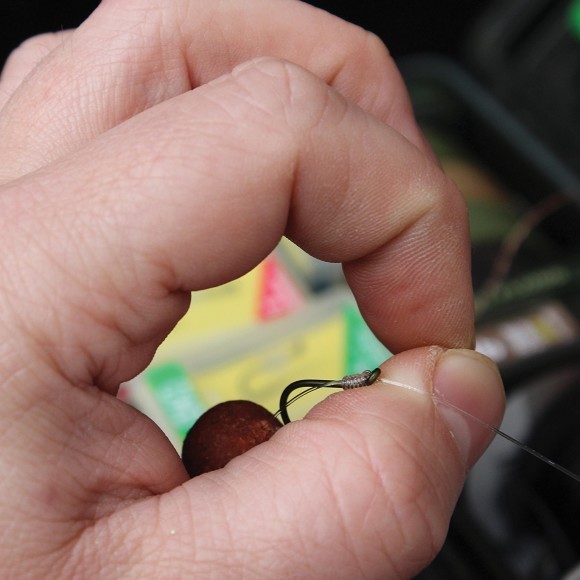
The ‘freeze-frame’ moment. A stiff material will hold the hookbait in place; a soft material is less likely to do so
You see, Stiff Rigs (and I refer to them in their original form, not the C-word Rig you’re expecting me to talk about) were a first choice for those anglers who wanted to buck the usual trend for using braids, Dacron and standard monofilaments. A true stiff rig is tied in a stiff material with either a Knotless Knot or D Rig, with a loop at the swivel end. No curves. No ring swivels. No hinges. Just a standard rig that could be used with any buoyancy of hookbait. It’s great because you get fewer tangles, the rig kicking away from the lead, and a presentation not many other anglers use. The downside is it doesn’t always sit well over a softer lakebed, the hookbait movement is restricted, and some hooks don’t work too well with stiff materials. But let’s get really technical, for a moment.
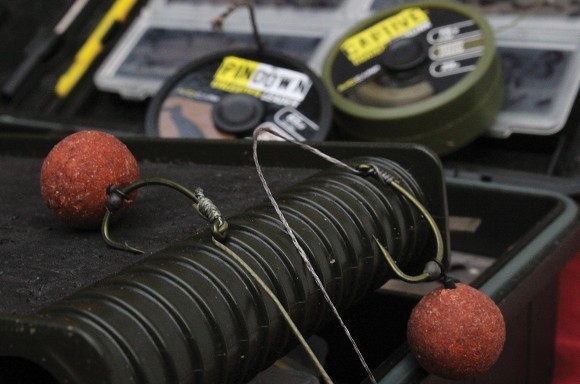
What I think can happen. Imagine the rig board is a bottom lip. One holds, one folds over
Mike Kavanagh is probably the name most recall as popularising the original Stiff Rig. Mike has written chapters about stiff rigs, but the basic premise is about freeze-framing that moment when the hook goes inside a carp’s mouth. Having watched how carp feed, Mike concluded that a carp would keep trying to eat a bait until it went into its mouth, so worries about fish picking a stiff rig up from behind, for instance, weren’t really worthwhile concerns. So long as the hooklink could move freely, offering little resistance, it could work. Adding a hinge at the swivel created this lateral movement, so the fish could continue to attempt to eat the hookbait, no matter what.
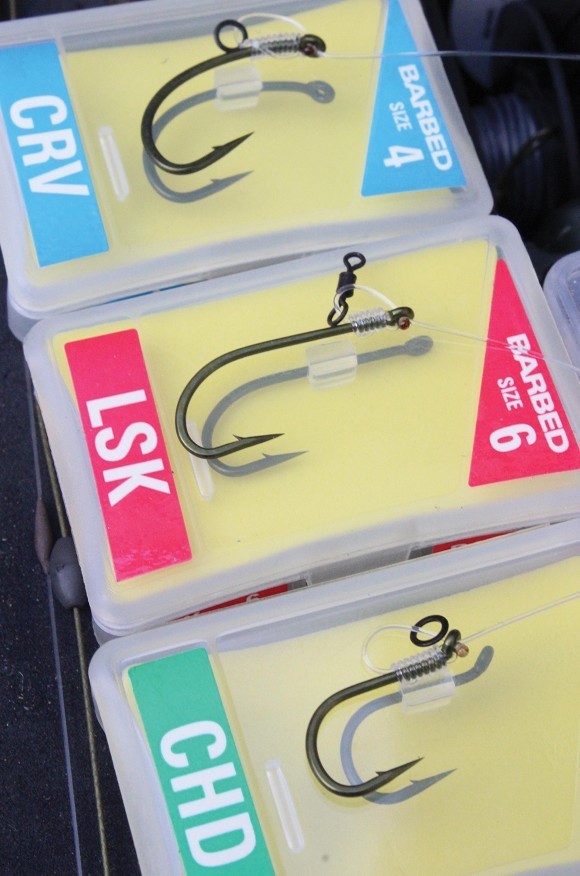
Some hooks lend themselves better to a stiff rig than others
Mike’s ‘freeze-frame’ idea was based around how initially only the bait, hook and first inch or two of a hooklength enter a carp’s mouth. Now freeze-frame that moment. Mike could see how a soft hooklink could be easily ejected or simply drop out in that sequence. Now rewind a little and replace the hooklink with a stiff one. Once that rig goes in the carp’s mouth, it’s going to be more difficult to leave the way it went in.
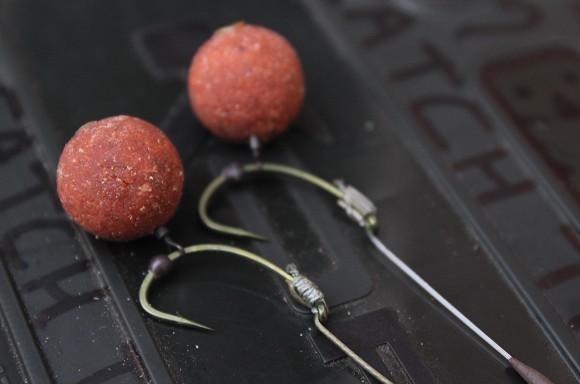
I was shown The German Rig by German carper and good friend Christian Kessler. It transformed my fishing!
I’ve been an avid fan of the Stiff Rig for many years. I prefer it for all my bottom bait presentations, as I believe the ‘freeze-frame’ moment is essential in catching more on non-buoyant baits. With a pop-up the hook hangs prone. With a wafter the buoyancy – in theory, anyway – sends the rig further back into a carp’s mouth and again, the hook hangs prone underneath. With a bottom bait, everything needs to happen in that first inch behind the hook, as the bait naturally wants to roll back the way it came.
The German Rig
This is why I was so convinced by what I call the German Rig, which I mentioned in a previous CARPology piece. Christian Kessler showed me the set-up in 2013 and his run of big fish caught after he changed to the set-up. In 2014 he took me to an old German sand pit where I was convinced further that the rig was worthy of consideration. Underwater, Christian used his finger and thumb in a ‘hoop’ to imitate a carp’s mouth. He scooped up a bottom bait tied to a soft hooklink, and when he moved his hand away to roughly imitate a moving carp, the rig would almost always tumble back on itself and simply fall back to the lakebed. With the German Rig, tied in a stiff mono or fully coated braid, the rig would catch in the ‘hoop’ almost every time.
The stiffness of the material was hanging the hook in the ‘prone’ position usually achieved with a pop-up rig for longer. Enough time for the ‘freeze-frame’ moment to work in your favour and for the hook to find a home.

Another brute falls to the German Rig
Later that trip, I got to see how the rig worked at very close quarters, catching a 48lb+ German monster, a fish that hadn’t seen the bank for two years! I watched the carp take the bait just a few feet from my own feet in gin clear water, a moment that transformed my fishing completely. Since, the rig has been a first choice. I managed 20 fish in six nights at Baden Hall in 2014, including a number of thirties and my first forty. The rig also accounted for a December 42lber, another PB breaker.
In essence, it is a Stiff Rig, albeit not the same as Mike’s original concept. Then again, Mike himself is more of an exponent of the Multi-Rig these days, which itself works based on the Stiff Rig ‘freeze-frame’ concept. Like the standard Stiff Rig, the Multi-Rig can be fished with a ‘Hinge’ in it, a set-up which I believe can be absolutely incredible used at the right time, especially with fish that aren’t seeing such presentations with any regularity.




